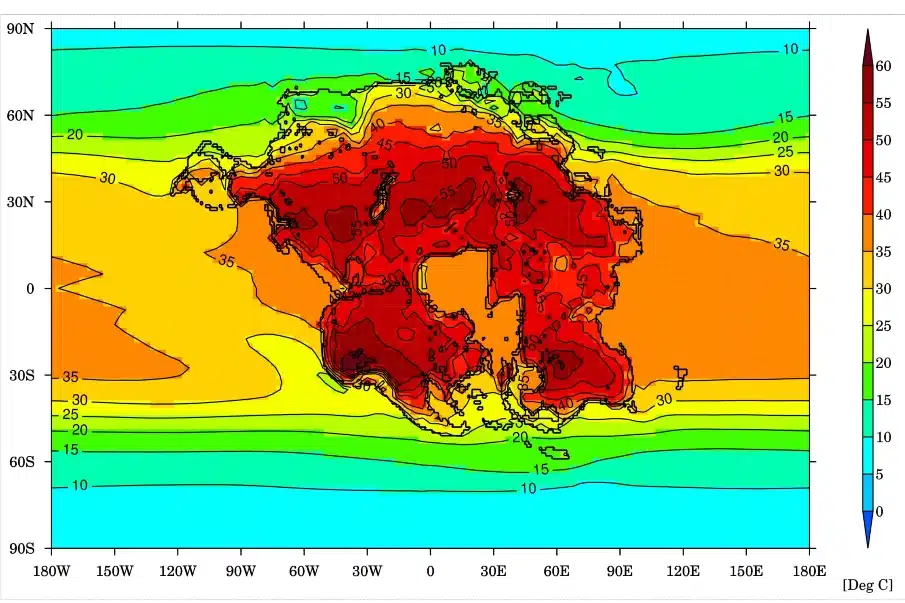Supercomputer simulation predicts the year of human extinction on Earth
- A supercomputer simulation has predicted when human extinction on Earth could happen
- It’s a world first for the groundbreaking technology
- And it’s not how and when you might have thought
Published on May 01, 2024 at 12:55 PM (UTC+4)
by Amelia Jean Hershman-Jones
Last updated on May 03, 2024 at 3:26 PM (UTC+4)
Edited by
Tom Wood
A supercomputer simulation has taken a look into the future and predicted when human extinction on Earth could happen in a world first for the groundbreaking technology.
With climate change, the threat of robots taking over, and the possibility of global war looming – it turns out we’ve got more time than you might think.
Researchers at the University of Bristol published a paper last year claiming to have pinpointed how and when life on Earth as we know it will end.
READ MORE! $1.5B startup close to bringing the woolly mammoth back from the dead
The team used the new technology of a supercomputer to crunch geological and atmospheric data.
Surprisingly the major threat for human extinction didn’t come from outer space – like the ‘God of Chaos’ asteroid or AI robots taking over the planet.
In fact, the reason the supercomputer gave for the ‘next mass extinction since the dinosaurs died out’ is actually tectonic plates.
You might know that these are huge and irregular pieces of the Earth’s crust, which fit together like a puzzle covering Earth.

And you also might know their collisions are responsible for earthquakes, tsunamis, and volcanoes – even the ones that spew gold.
What you might not know, however, is that they’re likely to eliminate nearly all mammals, leading to human extinction, in roughly 250 million years.
According to this research, that’s the time they’ll collide and merge to form one massive supercontinent called ‘Pangea Ultima’.
“The newly-emerged supercontinent would effectively create a triple whammy, comprising the continentality effect, hotter sun, and more CO2 in the atmosphere, of increasing heat for much of the planet,” a member of the research team, Dr Alexander Farnsworth, said
The result would be a climate with typical temperatures much higher than Earth’s today, sitting between 40 and 50° Celsius.
Adding to that, ensuing humidity would severely compromise mammals’ ability to sweat and cool down.

Only eight to 16 percent of land mass would be habitable but with extremely harsh conditions.
“This is why it is crucial to reach net-zero emissions as soon as possible,” co-author, Dr Eunice Lo, research fellow in Climate Change and Health at the University of Bristol, said.
For instance, NASA and Boeing are working on a green X-plane with a modern design that would help reduce flight emissions.
This comes under the effort to help the US achieve net-zero emissions for aviation by 2050.
Several other countries have also joined the United States to bring their emissions as low as they can, in a bid to help get climate change under control.
DISCOVER SBX CARS: The global premium car auction platform powered by Supercar Blondie

All Supercar Blondie contributors undergo editorial review and fact-checking to ensure accuracy and authority in automotive journalism. After gaining her BA Hons in French and English at the University of Nottingham, Amelia embarked on a vocational diploma from the National Council for the Training of Journalists (NCTJ). This led to numerous opportunities, from interning at Vogue to being on the small team that launched Women’s Health magazine in the UK, which was named the PPA Consumer magazine of the year for three years running. As Health, Beauty and Fitness editor, Amelia personally received a Johnson & Johnson Award and was shortlisted for both PPA and BSME titles. Since then, Amelia has created content for numerous titles and brands, including the Telegraph, 111 Skin, Waitrose, Red magazine, Stylist, and Elle, as well as being Head of Content at Vitality and Editor in Chief at INLondon magazine. “My superpower is translating technical jargon about the mechanical workings of a supercar into a relatable story you’ll want to share with your friends after you’ve read it.” After joining the SB Media family as a senior journalist in September of 2023, Amelia’s role has evolved to see her heading up the SEO output of the editorial team. From researching the most ‘Google-able’ key terms to producing evergreen content - it’s been a time of hard work, growth, and success for the editorial team and the Supercar Blondie website. “I like to think of myself as a ‘method journalist’. In other words: I live and breathe whatever I am writing about. When writing about fitness, I trained as a personal trainer, and as a beauty editor, I completed an ‘expert’ in scent diploma with the Fragrance Foundation. “During my tenure at Supercar Blondie, however, I did something I never thought possible: I passed my driving test at the age of 36. One day I’d love to train as a mechanic to better understand what happens under the hood, too. “My sweet spot is providing readers with a ‘takeaway’ (read: something new they didn’t know before) after reading every one of my stories. While I don’t claim to be an expert in the automotive world, I know the experts and bodies in the field to rely on to provide our readers with an informative and thought-provoking story every time they visit the site.”





